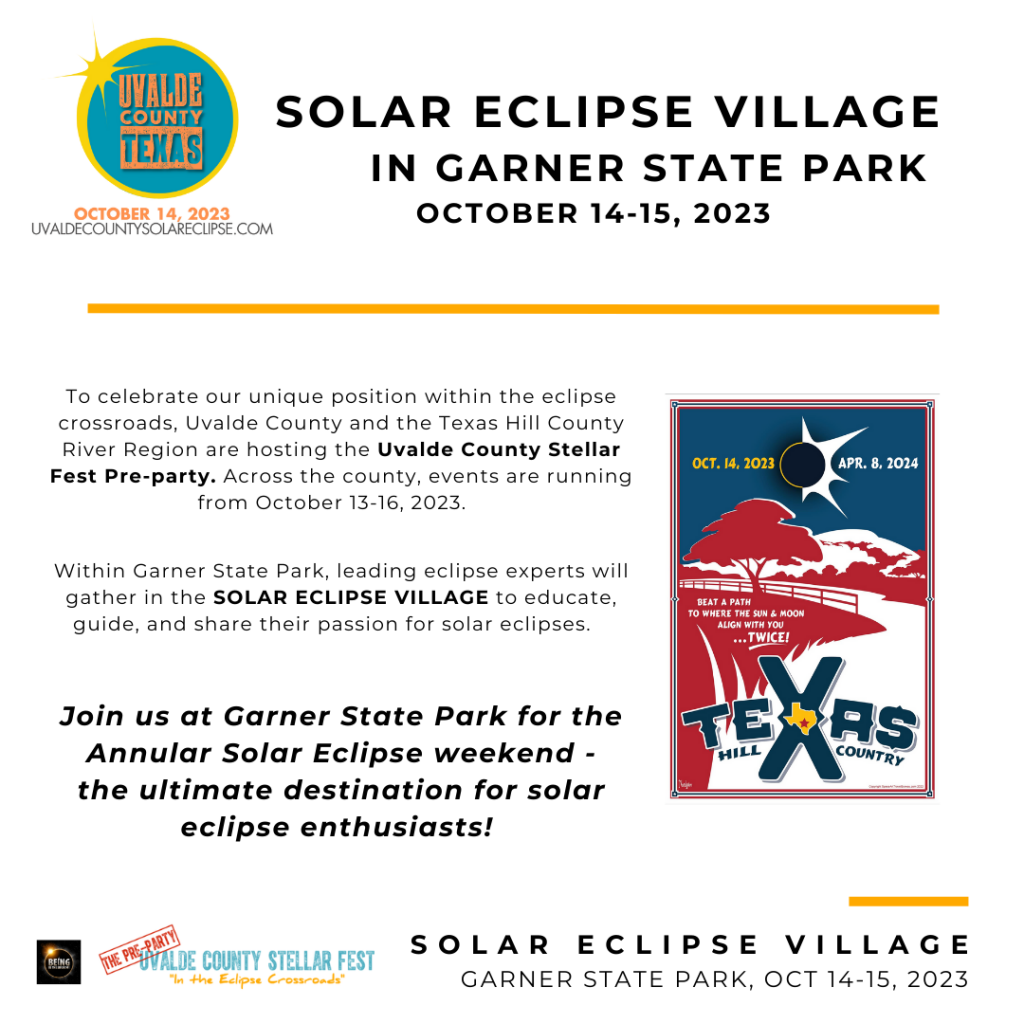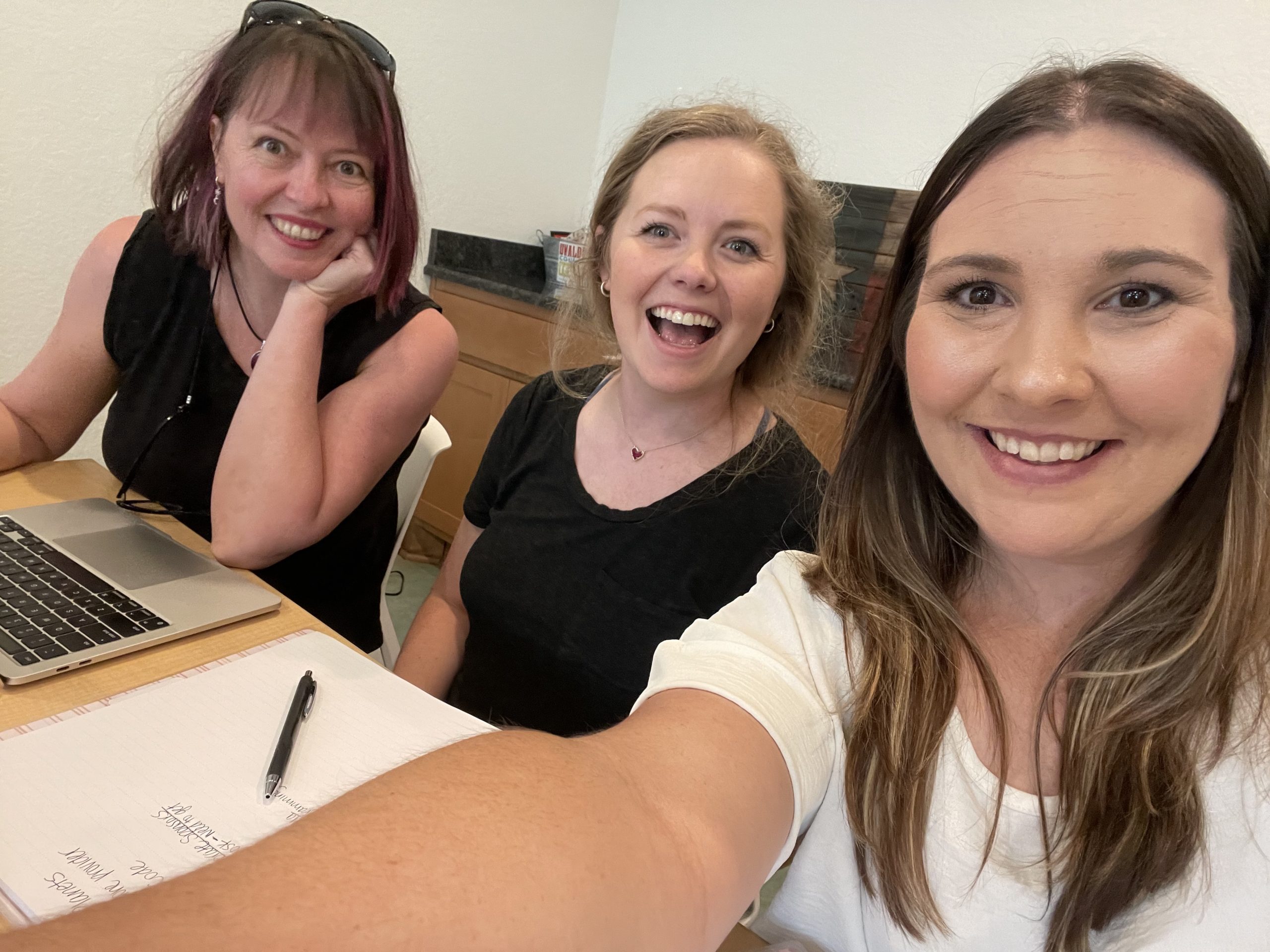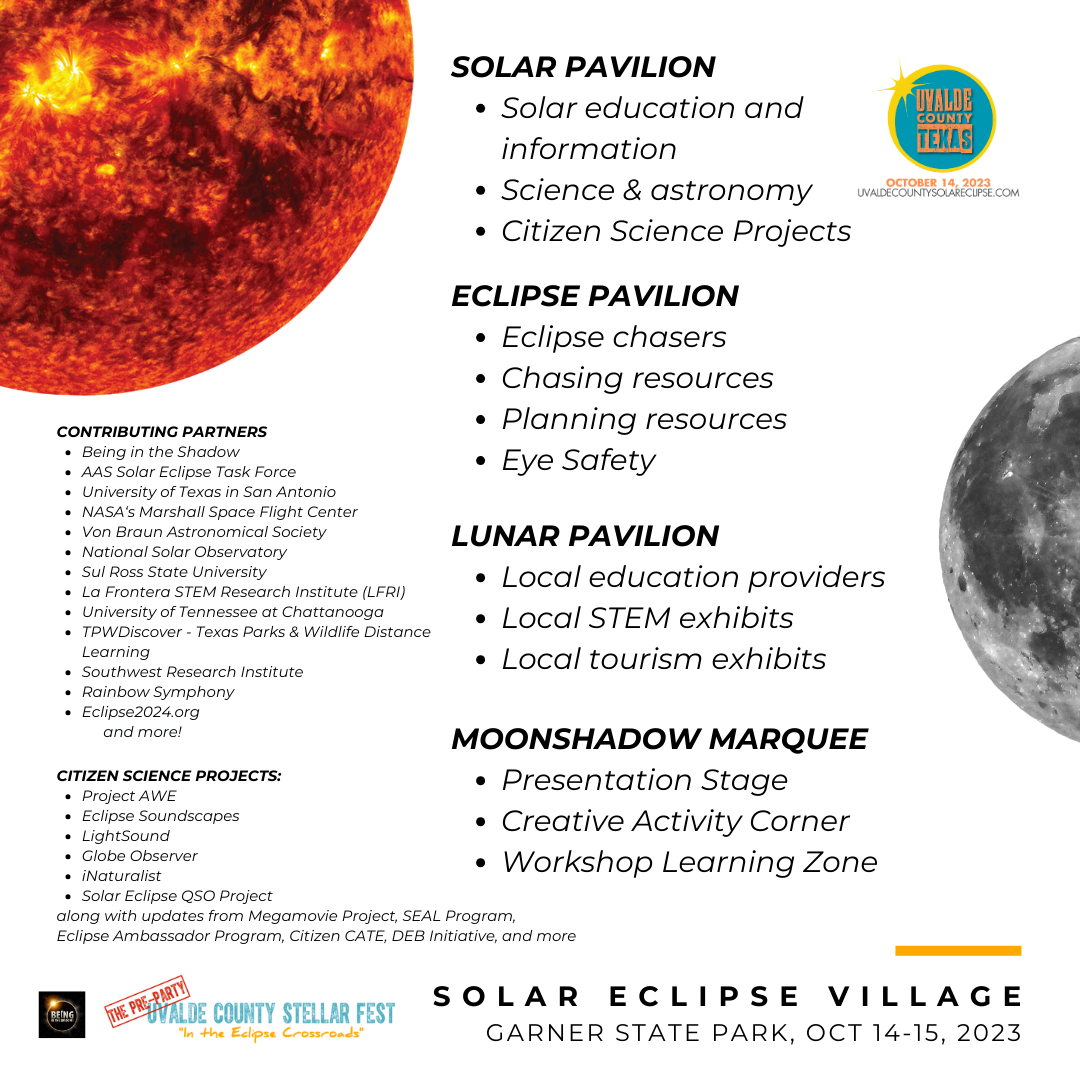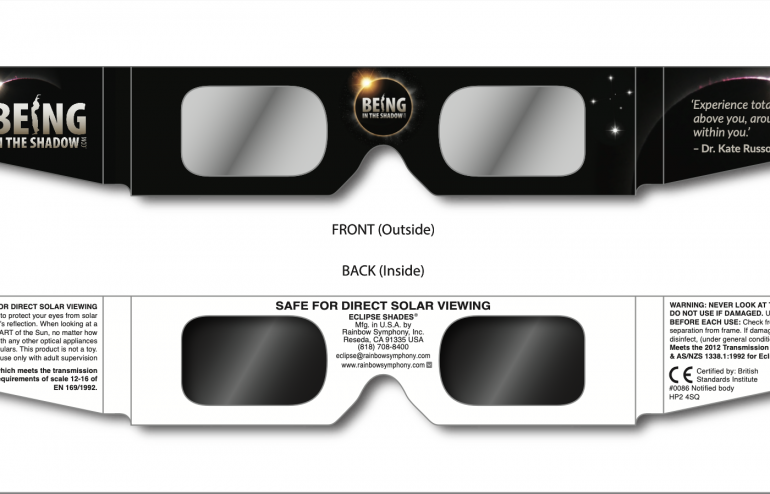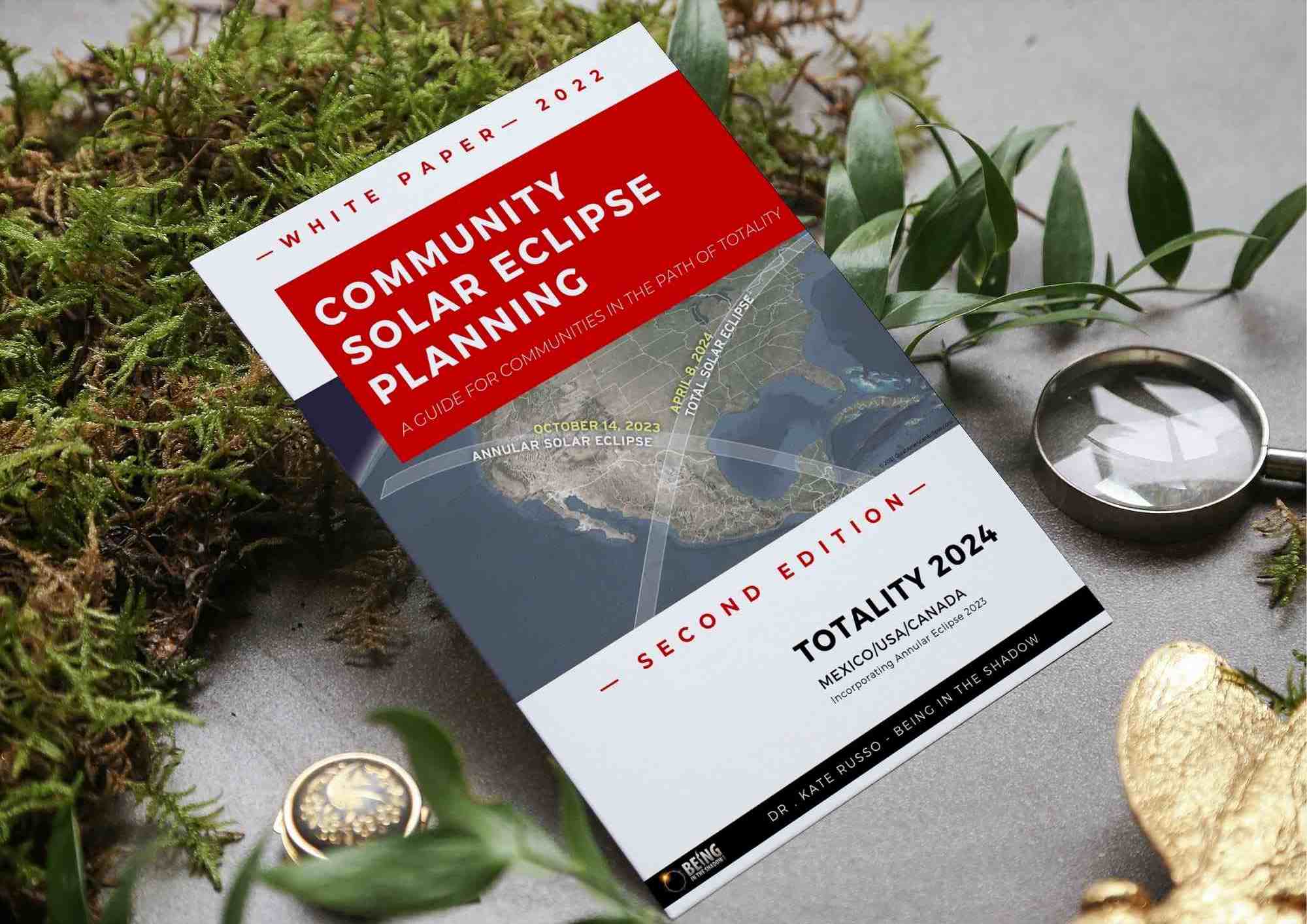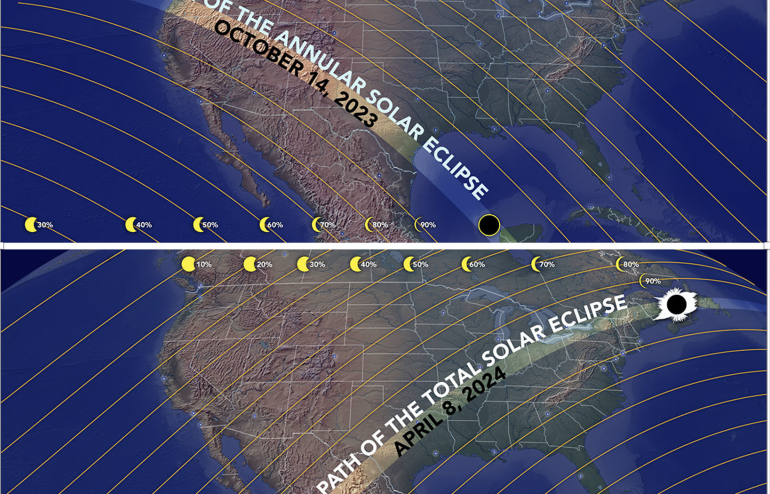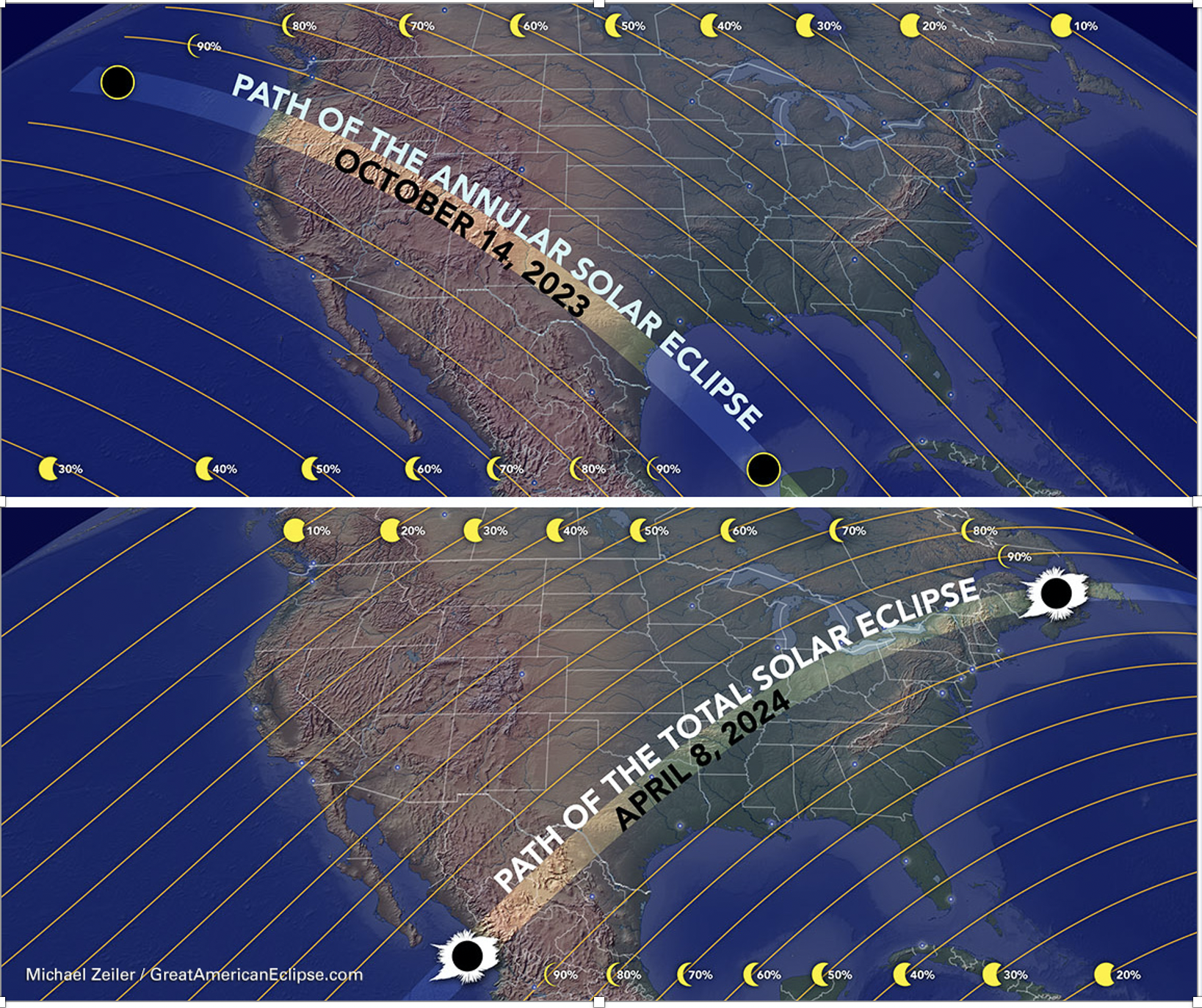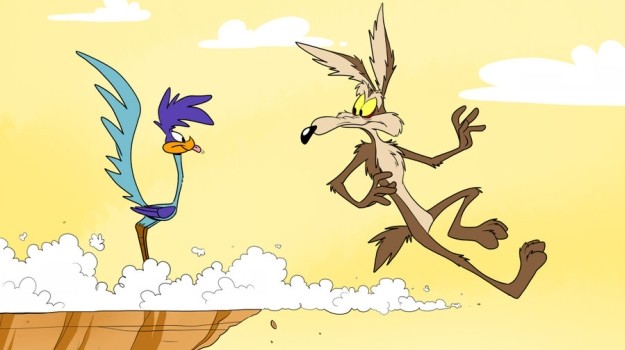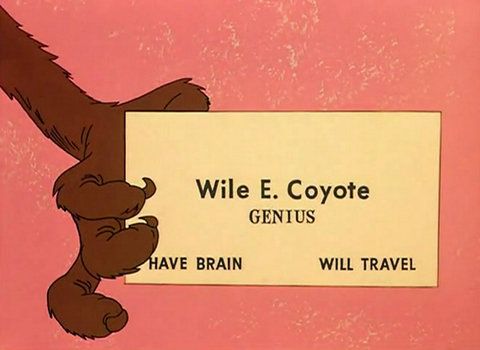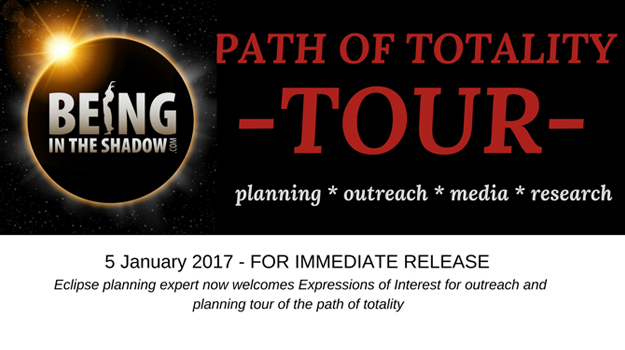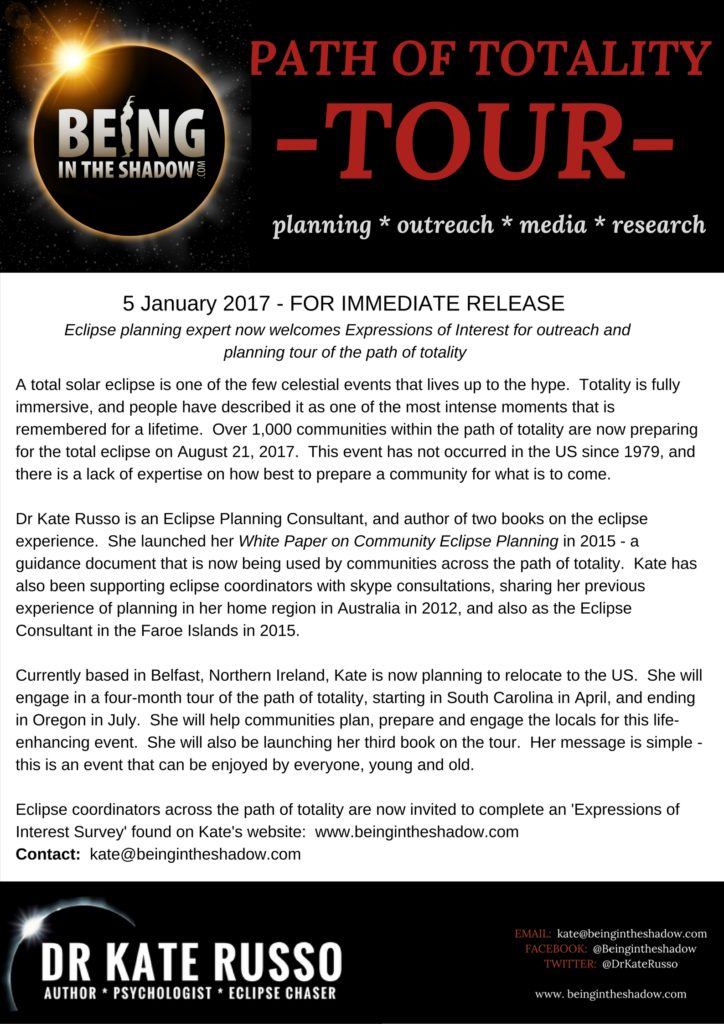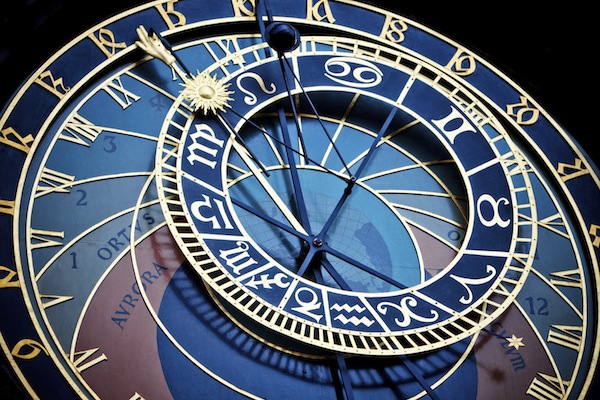You will no doubt be aware that TWO solar eclipses are coming soon to the US – the first is an Annular Solar Eclipse (ASE) on October 14, 2023, followed six months later with a Total Solar Eclipse (TSE) on April 8, 2023. Over 3,000 communities across the US are furiously planning for the TSE next year. But the communities in the eclipse crossroads – where these two paths intersect in Texas – are planning for both.
Uvalde County, Texas, is in the eclipse crossroads, including the beautiful Texas Hill Country River Region (THCRR). This region is already a tourist draw, with the defining feature being the rivers, but it is also an incredibly important and diverse ecological crossroads. The gem is Garner State Park, one of the most-loved State Parks in Texas. Garner State Park happens to be in the premium location for the TSE in April 2024, very close to the centerline with an impressive 4 minutes 26 seconds of totality.
If you could travel to any location in April 2024 to give you the best chances of clear weather and the longest duration of totality, my top choice would be near Torreon in Mexico. However, many are keen to experience this TSE within the U.S. My top choice along the U.S. path is to position in Uvalde County, Texas, and to view within or near Garner State Park. But shhhhhh…. don’t tell the masses.
And because all of Uvalde County is ALSO within the path of annularity this October, viewing from the region will give you that ‘ring of fire’ effect, where through solar filters, the Moon appears to be surrounded by the Sun. Despite the catchy name, the ASE is nowhere near as thrilling, awe-inspiring, or exciting as a TSE. Still, the ASE is an interesting and informative experience that will certainly give you a feel for what is to come for next April’s TSE. In Garner State Park, annularity will last 4 minutes and 55 seconds.
Other areas along the path of annularity have a greater chance of clearer skies for this October’s ASE compared to Texas, with many stunning parks and landscapes to view from. As recently as early June, my viewing plan for the ASE was, in fact, New Mexico. I have since completely pivoted back to Uvalde County for the ASE. This is the origin story of why this happened and what it has led to.
Doing the best you can with the resources you have at the time
During the June 2023 AAS Eclipse Planning meeting in Albuquerque, New Mexico, I was able to spend time with Hailey and Erica, who are in charge of implementing the Eclipse Strategy for Uvalde County. We had already been working together via weekly Zooms from November 2022 to April 2023, as I completed the community Eclipse Strategy for the region. This was the first time we met in person, and it was great to spend time socially together. But I discovered some significant barriers had prevented them from moving forward with the eclipse strategy we had worked on together for so long.
I felt compelled to re-engage and support this region, especially as they were preparing for TWO eclipses within six months. As I was familiar with the region, having done the strategy, I could see what quick actions could be taken in the next few months to bring things back on track. But I knew this would require a significant time investment and was something I couldn’t personally afford to do.
I was torn, and this led to some soul-searching. What kept coming to mind was a phrase I use in my psychology practice: “People do the best they can with the resources they have at the time“.
After a lengthy into-the-night heart-to-heart with one of my fellow sun-loving colleagues (who shall remain nameless), I decided to follow my heart, go where I could make the most impact, and help them implement what was needed specifically for the ASE. And then things moved quickly – I committed, the THCRR committed, and everything happened all at once. I spent the rest of that AAS meeting connecting the Uvalde County folk to the wider eclipse planning network.
Days later, I traveled to Uvalde County, where Erica, Hailey, and I were inseparable for the next four days. We huddled, brainstormed, and plotted around the table as various stakeholders came and went. We did site visits, chopper flights for a birds-eye view, scouted for venues, and mapped out the strategy for the ASE weekend. Many people dropped by – some saying hi, checking progress, bringing us food. Much was achieved in this short period, laying the groundwork for the coming months.
On returning to Australia, I continued conversations within my extensive eclipse networks across the U.S. to see who could help out, and conversations were all quite similar:
Me – “Hey, nice to see you again. Whacha doing for the annular?”
x – “Um, well, I’m deciding on x or y, but I’m not committed. I might do z.”
Me – “Fancy joining me for some eclipse outreach and to help support Uvalde County?”
x – Sure!
I had noted the non-commital position many had about the annular eclipse, which turned out to be the magic ingredient for success. Also, by linking with existing STEM providers, the eclipse brings in resources to the community between now and April next year. I have tried to showcase the region’s many natural assets and support and champion those on the ground so they can continue to do what they do best. The sense of goodwill, willingness to step up, and a desire to do something for the greater good have driven this project forward.
Assemble your team, develop your strategy, and boldly go
Since then, we have curated a great weekend of festivities for the annular eclipse weekend this October. Erica and Hailey have pulled together a full UVALDE COUNTY STELLER FEST – PREPARTY – a varied program of events for the annular weekend in three key locations that will appeal to the local population.
For my part, I have pulled together the eclipse-focused SOLAR ECLIPSE VILLAGE in Garner State Park, which is one of these three location events. I have been able to create a unique structure that focuses on the ASE on Saturday October 14, and showcases the TSE on Sunday October 15. Village Day passes are required in advance but are FREE!
When launching events, usually everything is ready to go at the time of launch. Working within a much shorter time frame means that not everything will be readily available at the same time. But plans are made, people have pulled together, magic is happening, and the ASE weekend will be awesome all over Uvalde County. Our next job is getting information out there – schedules are coming, booking systems will be set up soon. All information will be made available on uvaldecountysolareclipse.com, and will be updated also on the associated FB page. Please be patient if you can’t find what you are looking for straight away – we are doing the best we can with the resources we have.
It does indeed take a village to create a village.


